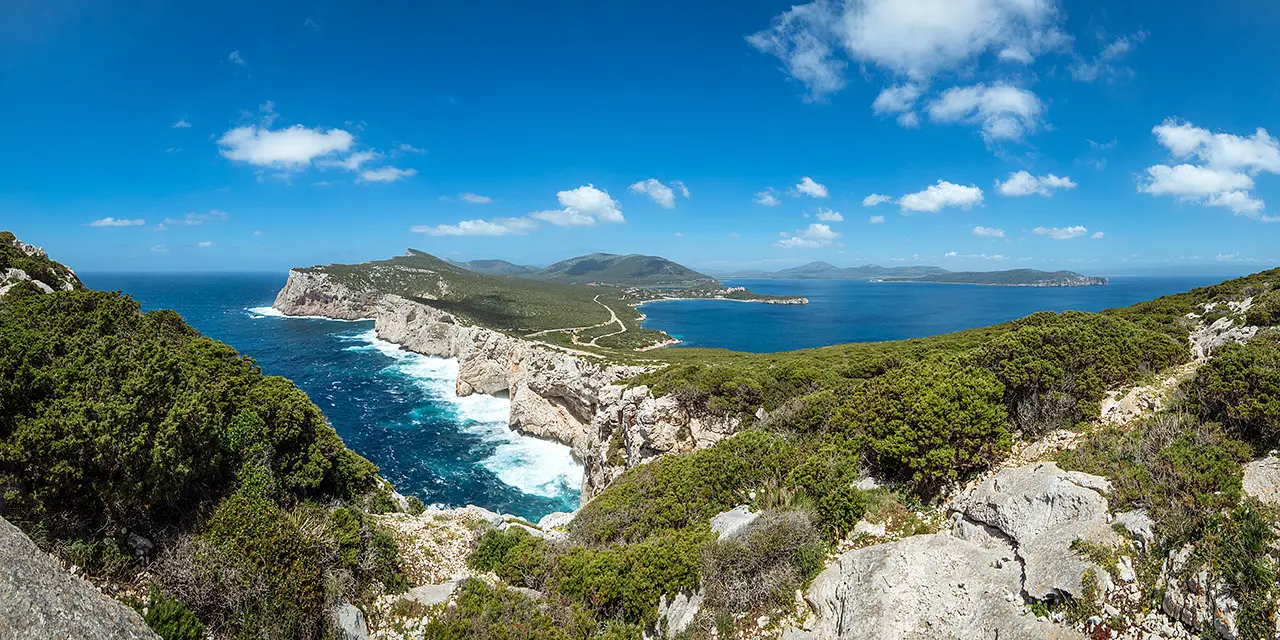SHARRYLAND


Capo Caccia, nature sanctuary
The northwest of Sardinia is symbolized by the promontory that stands out in the sunset of Alghero

Where is

What it is and where it is
Alghero is the reference point for visiting northwestern Sardinia, which in the island's toponymy goes by the name of Nurra. The hinterland reserves evocative scenery, but it is the coast that provides the greatest excitement, especially if one thinks of the wild beauty of Capo Caccia. This promontory, whose vertical walls seem to defy the sea, is the centerpiece of a natural park that protects 60 kilometers of coastline and much of the seabed in front of it, rich in biodiversity.
Why it is special
Eight nautical miles, or 15 kilometers, three-quarters of which are exceptionally scenic, separate Alghero from Capo Caccia, a spectacular promontory not only because of the height and verticality of its walls, but also because of the caves that open up at sea level: Grotta Verde, Grotta dei Ricami, Isola Foradada... are names that hint at wonders; and the fairy-tale Grotta di Nettuno can also be reached from land by descending the 656 steps of the vertiginous Escala del Cabirol.
Not to be missed
Adding to the environmental value of Capo Caccia is the presence of one of the last colonies of griffon vultures(Gyps Fulvus) on the island, without underestimating the picturesque reality of the herds of Giara horses and wild donkeys, free to scamper through the Mediterranean scrub. Two protected areas have been established to protect all this: the Porto Conte Reserve, which covers 550 hectares of coastline, and the Capo Caccia and Isola Piana Marine Reserve.
A bit of history
Alghero, on the island's northwestern coast, has Catalan roots. You can see it in the monuments and hear it in the Iberian idiom; which is why it is always evoked by Charles V, who had called it "bonita y bien asentada," meaning "beautiful and well fortified." The turreted walls offer a promenade to the sea cheered by the spectacle of cormorants diving among the rocks. The tiled dome of the Spanish-style Sant Miquel Church can be glimpsed from every point, while the Cathedral has Savoyard physiognomy.
Trivia
The story of Alghero under the flag of Spain began in 1353: the Genoese, defeated at sea, cleared the field and Peter IV of Aragon ordered that the city be occupied by Majorcan and Catalan "pobladores." The Iberian presence would last for more than 350 years, leaving an indelible mark on the city's physiognomy, with palaces and churches offering glimpses of Catalan florid Gothic. In the Sardinian "Barceloneta" even the urban toponymy is bilingual: alleys are also "carrers" and squares "plaças."
Enter the Map of Italy's Undiscovered Wonders and find treasures where you least expect it... Inspire, Recommend, Share...
Collections
The Map thanks:
Enter the Map of Italy's Undiscovered Wonders and find treasures where you least expect it... Inspire, Recommend, Share...
Where is

Collections

